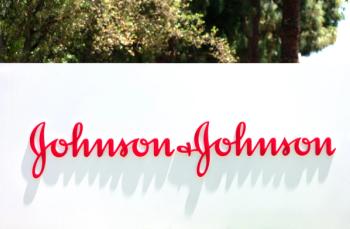
- Pharmaceutical Commerce - January/February 2016
Annual EY Firepower report finds a 'feverish' environment for M&A
Deal value soared above $300 billion in 2015, but will the dealmaking sustain Big Pharma companies?
EY’s annual Firepower report evaluates both the financial resources available to select pharma companies for M&As, and the future financial position of those companies, given their product portfolios. The result, EY hopes, is a quantitative perspective on how big pharma, big biotech and small specialty companies should position themselves for future growth.
In 2015, the dealmaking volume soared above $300 billion, led by the proposed Pfizer-Allergan merger. The combination of Big Pharma’s many acquisitions during the year (thus taking on debt and burdening stock prices) caused that sector’s Firepower Index to decline by 6% to around $750 billion by the end of 2015. Big Biotech rose slightly (+3%), to nearly $350 billion, while specialty pharma companies dropped by nearly half (-47%), to around $50 billion.*
What’s significant is that Big Pharma’s Firepower has stopped declining as a portion of life sciences total Firepower; it now represents a stable 70%. IN past years, its Firepower had been declining, which implied that Big Pharma would not have the resources to sustain itself as part of the industry’s future growth.
EY analysts note, however, that the “growth gap” the revenue potential of each sector, relative to the overall industry, remains at around $100 billion; sustaining themselves into the future will still be a problem for Big Pharma companies. As an example, EY notes that three of the 24 biotech and specialty pharma companies it had identified as “worthy candidates to close growth gaps” have been acquired—but none by a Big Pharma firm.
“While we can’t predict more large transformational deals over US$100b in 2016, we do expect a continued brisk pace for acquisitions and a continuation of the robust divestiture environment, as companies seek to focus on and gain scale in their chosen therapeutic areas,” concludes Glen Giovannetti, EY’s Global Life Sciences Leader. “Three times as many companies now possess at least US$3 billion in firepower than a year ago, meaning more competition for targets as well as a longer list of potential acquirers for divestitures. Big pharma, in particular, should capitalize on its dominant share of firepower and continue to pursue aggressive but strategically sound deals to fill its portfolio and pipeline gaps.”
*EY calculates this Index based on a select group of companies in each category, not the entire universe of such companies; so “Big Pharma” includes 17 companies such as Abbot, BMS, Merck and Novartis; “Big Biotech” includes Amgen, Biogen and 10 other companies, and “Specialty Pharma/Generics” includes Allergan, Shire, Valeant and 7 others. The full accounting is in the EY
Articles in this issue
almost 10 years ago
Managing logistics partnerships in uncertain timesalmost 10 years ago
Vaccines manufacturers wrestle with public health policyalmost 10 years ago
The impact of the anti-vaccination lobbyalmost 10 years ago
Logistics providers confront a complex, global healthcare marketalmost 10 years ago
Digitized stress analysis improves blister performancealmost 10 years ago
Enterprise solutions for cold chain managementalmost 10 years ago
Pharma logistics--so what?almost 10 years ago
Industry hit a record low number of FDA OPDP actions in 2015Newsletter
Stay ahead in the life sciences industry with Pharmaceutical Commerce, the latest news, trends, and strategies in drug distribution, commercialization, and market access.




